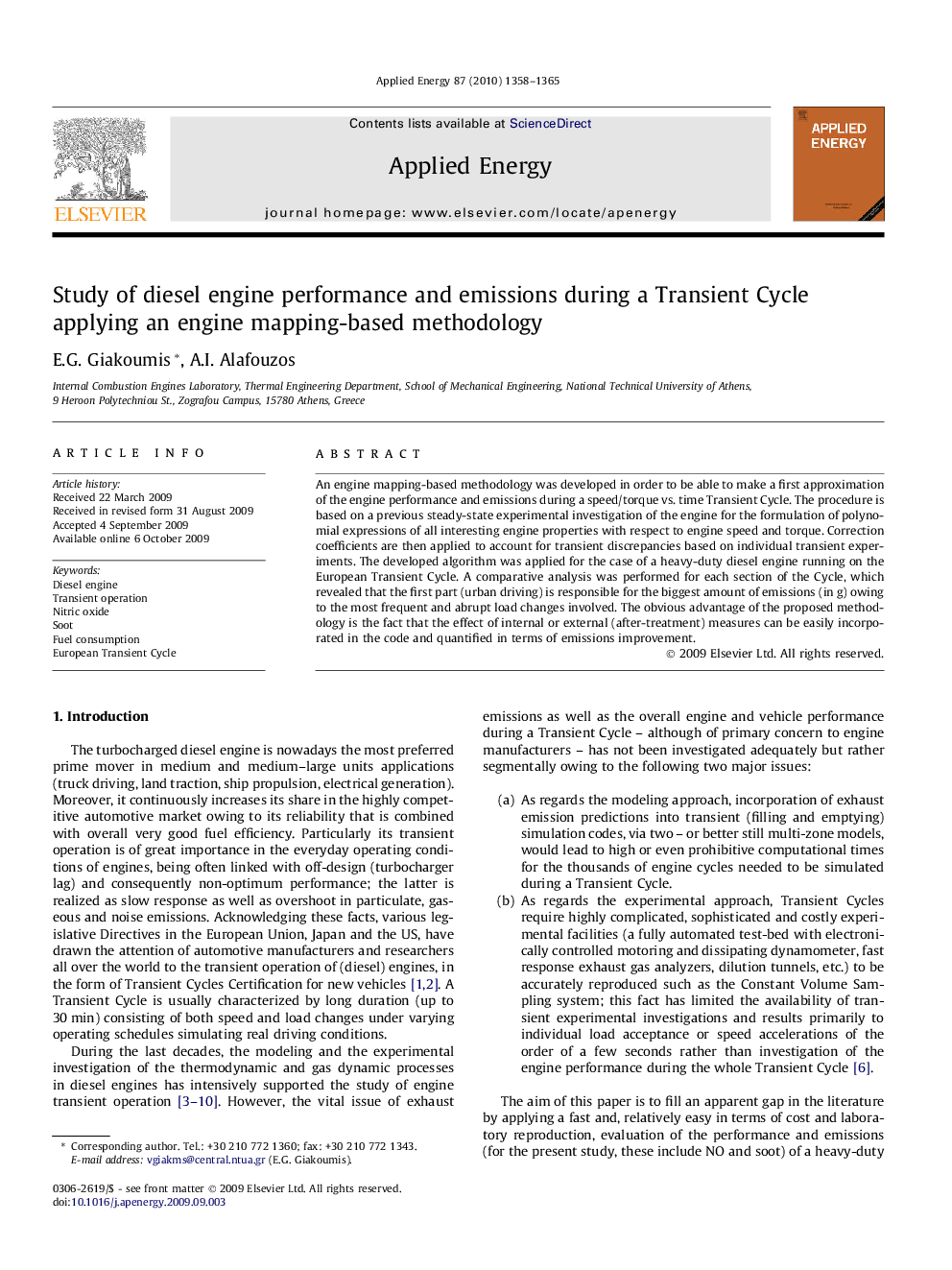| Article ID | Journal | Published Year | Pages | File Type |
|---|---|---|---|---|
| 244645 | Applied Energy | 2010 | 8 Pages |
An engine mapping-based methodology was developed in order to be able to make a first approximation of the engine performance and emissions during a speed/torque vs. time Transient Cycle. The procedure is based on a previous steady-state experimental investigation of the engine for the formulation of polynomial expressions of all interesting engine properties with respect to engine speed and torque. Correction coefficients are then applied to account for transient discrepancies based on individual transient experiments. The developed algorithm was applied for the case of a heavy-duty diesel engine running on the European Transient Cycle. A comparative analysis was performed for each section of the Cycle, which revealed that the first part (urban driving) is responsible for the biggest amount of emissions (in g) owing to the most frequent and abrupt load changes involved. The obvious advantage of the proposed methodology is the fact that the effect of internal or external (after-treatment) measures can be easily incorporated in the code and quantified in terms of emissions improvement.
